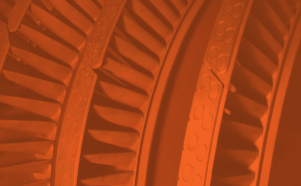In the United States, Mill buildings have been community cornerstones since the 1800s. During the North American Industrial Revolution, thousands of mill buildings were constructed to allow for faster production of textiles and other goods. These high-producing areas, known informally as Mill Towns, suffered greatly in the late 20th century, leaving many of these former factories abandoned.
A housing boom in the late 1900s caused people to turn to these Mill Towns in search of housing and jobs. Instead of knocking down these historic mill buildings, developers found that preservation was much more sustainable, allowing the properties to be transformed into residential and mixed-use commercial buildings.
Converting these industrial spaces into suitable housing requires a substantial amount of work. Given the various substrates requiring surface preparation, the need to remove lead paint, and multiple trades needing to work simultaneously, the choice of abrasives should be impacted by these factors.
Below, we’ve highlighted some of the benefits of using Sponge Media abrasives on mill buildings:
Versatility of Different Substrates
Mill buildings do not come as a one size fits all project. Many of them incorporate a variety of different materials, such as brick, steel, masonry, and wood, amongst others. Making up both interior and exterior parts of the buildings, these substrates bear the brunt of weather and wear. Over time, they accumulate layers of paint, soot, corrosion, and environmental staining. However, with the right abrasive, restoring them to their former glory can be a breeze.
When working on the Old Altoona Silk Mill, contractors ran into this problem. With a tight timeline, they didn’t have time to switch between different types of grit (and equipment) for every substrate that needed to be restored, which included brick, wood, and steel.
Ultimately, utilizing Sponge Media on multiple substrates was the best option to keep their mill building projects on time, while preparing each surface to the correct specifications.
An example: Silver 60 Sponge Media has the ability to remove paint from wood beams and trusses, rust on steel columns, and lead-based coatings from concrete.
A less common, but still frequently seen substrate to stumble upon in these large buildings is tin. Occasionally, tin ceilings were used for fireproofing in mill buildings. So, while they may be less intricate and ornate than those found in churches or homes, they are still just as delicate and need to be handled properly. Often, areas within the building that boast tin ceilings will turn into restaurants, offices, or other types of commercial space.
Lead Based Paint Removal
Lead abatement in mill buildings presents a unique set of challenges. With the early construction of these buildings in the 19th and 20th centuries, many of them are coated in lead-based paints. This means that when it comes to restoring them, special handling is required in order to minimize dust generation and ensure a proper disposal of the hazardous paint.
While traditional abrasive blasting can remove existing lead coatings quickly, waste disposal of hazardous coatings mixed with spent abrasive like coal slag or crushed glass can be costly. Further, traditional abrasives generate higher amounts of dust, increasing the amount of time required for clean up.
For these reasons, Sponge Media is often chosen over traditional abrasives for any projects involving lead abatement. Sponge Media generates a very low amount of dust, which not only keeps workers safer than traditional abrasives in these types of environments, but also minimizes the amount of time spent on clean-up. Further, thanks to the recyclability of the Sponge, less waste is generated, lowering the cost of hazardous disposal significantly. Typically, the bigger the project’s square footage, the bigger the impact Sponge Media has on waste disposal savings.
For mill buildings to be restored and turned into residential buildings, compliance with HUD (U.S. Department of Housing and Urban Development) standards is necessary. HUD standards must be met during the abatement process to protect future residents of these mill buildings.
Access to Other Trades Nearby
During the restoration of mill buildings, it’s not uncommon that multiple trades need to be working in the same vicinity. When this happens, it’s paramount that other trades can work safely around abrasive blasters in order to keep the project on the proper timeline.
While traditional abrasives generate large amounts of dust and debris, Sponge Media suppresses dust, minimizing airborne contaminants, and lowers rebound. This allows other trades, such as electricians, structural engineers, and building planners, to work in the same area during the Sponge Blasting process. Care must be taken when removing hazardous materials, but many contractors have been able to allow other trades access to areas near Sponge Blasting areas with simplified containment and PPE use.
Ultimately, using Sponge Media in Mill Building Restoration projects proves itself to be advantageous in many different areas. Its multifaceted advantages can help streamline projects while prioritizing worker and environmental safety simultaneously.








